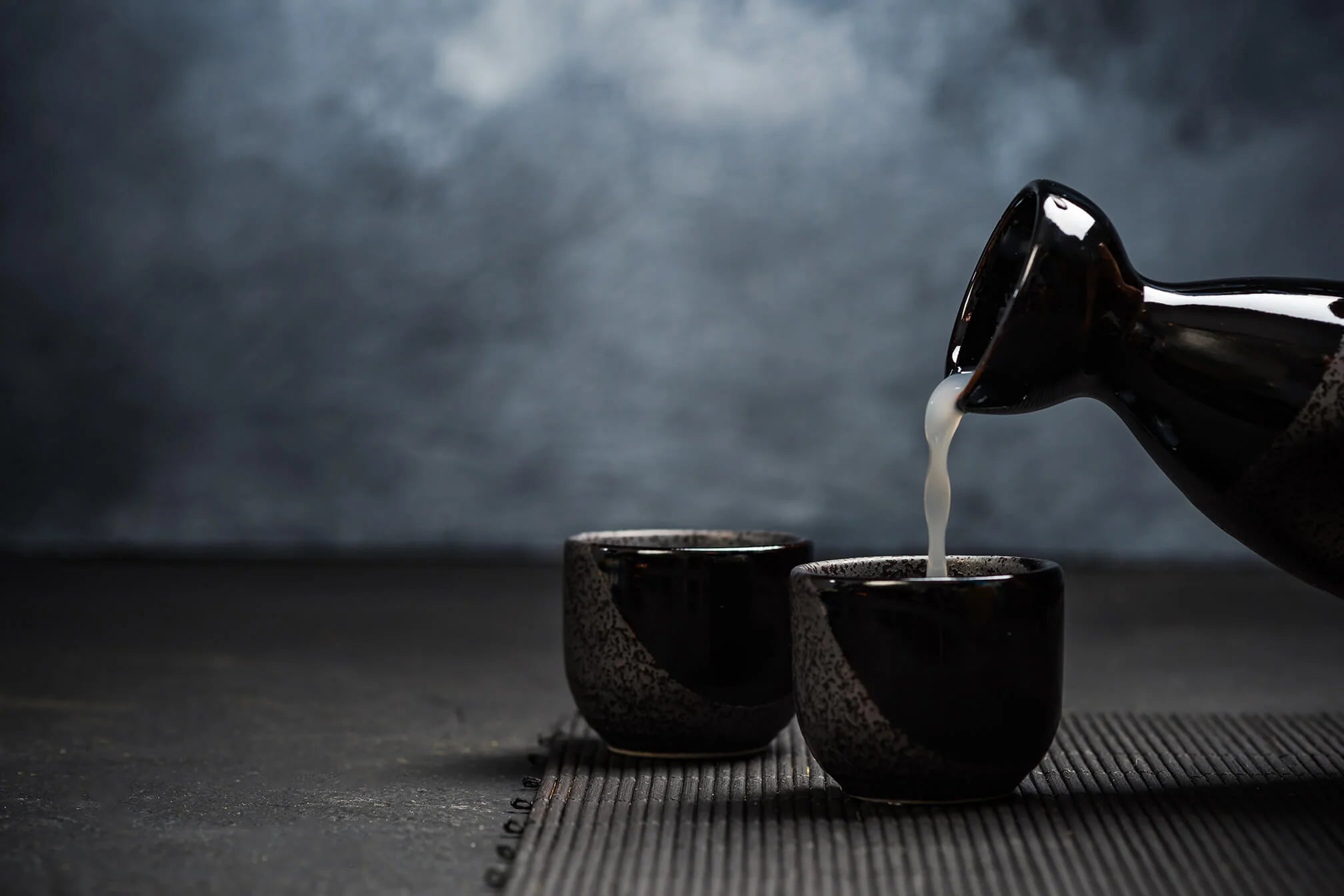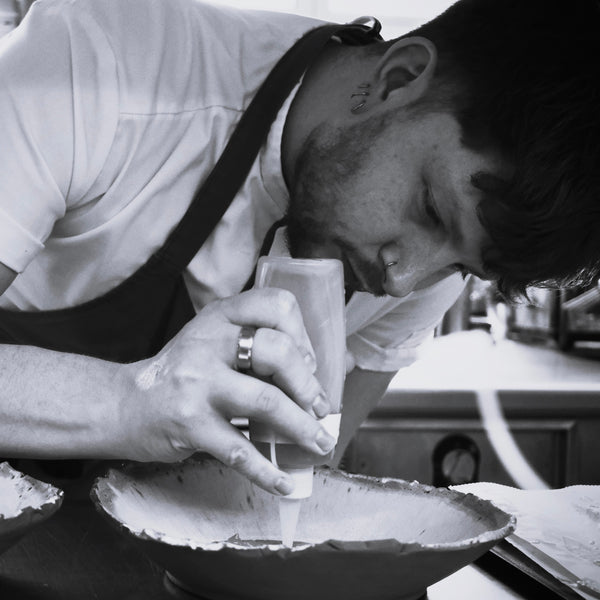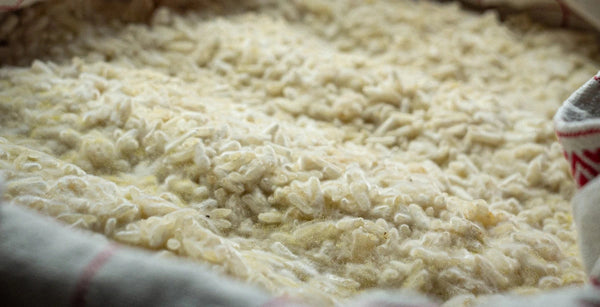The Ultimate Guide to Sake Ware

Sake is perhaps the most famous alcoholic beverage to come from Japan. While commonly referred to as a rice wine, sake is actually a brewed drink made from fermented rice, carefully polished to remove the bran husk. Sake is brewed using four ingredients: rice, water, yeast, and koji, and is available in a wide variety of grades, each with its own unique flavour notes.
In this article, we’re going to talk about sake ware—the flasks, cups, and glasses used for serving sake. Like so much else in Japanese culture, there is an astonishing range of sake vessels available, with the size, shape, and material of the cups all affecting the drinking experience.
Japanese sake vessels
There are five common types of traditional Japanese sake cups and glasses: ochoko, guinomi, sakazuki, mokkiri, and kiriko.
Ochoko
These tiny cups are typically made from porcelain (although other materials are available) and hold approximately 45 ml of sake. Their small size makes them ideal for sipping and savouring the sake and encourage regular refills from your host, a key tenet of Japanese hospitality. The small rim size means you won’t get as much of the aroma as you might with a wider cup or glass, but they are a great way to share sake with friends.
Guinomi
These share the same basic shape as the ochoko but are larger, holding anything from 90 ml to 180 ml of sake per serving. This gives the cups a wider rim, releasing more of the sake’s aromatics to your nose and spreading the flow of flavours more evenly across your palate.

Sakazuki
These small cups hold about the same amount of sake as an ochoko but are shallower in design with a wider rim, letting you enjoy more of the aroma. The shallowness of the cup encourages you to sip slowly while leaning forward, a motion that releases the flavour across more of your palate. Sakazuki were traditionally used at important events such as weddings, and many are beautifully decorated.

Mokkiri
This is a two-part method of serving sake, with the larger (about 180 ml) mokkiri cup sitting inside a wooden box, or "masu." This is a popular way of serving in Japanese bars, as it allows the host to demonstrate their generosity by overfilling the mokkiri and having the sake caught in the masu beneath. Any stray sake can be safely poured into the cup or drunk directly from the masu itself.
Kiriko
While most sake vessels are made of ceramic or tin, kiriko are beautiful examples of Japanese glassware, designed for serving chilled sake. The glass is of high quality, with stunning clarity and a reassuring weight to it. This makes it easier to handle and allows the user to admire the colour and clarity of the sake they are drinking.
Western-style sake vessels
With sake becoming a popular drink in the West as well as in its native Japan, it’s perhaps not surprising that some people choose to drink it from different kinds of vessels, namely wine glasses and tumblers:

Wine glasses
When using a wine glass to serve sake, you should leave plenty of room at the top of the glass for the subtle aromas to build up. Wine glasses are best used for chilled or room temperature sake, as hotter drinks could cause the glass to shatter. Wine glasses come in different shapes and, as such, suit different types of sake. For instance, a dry and full-bodied sake is better served in a larger wine glass, where you get to experience all of its complex flavour notes and aromas. Lighter, fruitier, and crisper sakes are more suited to a slimmer Chardonnay style glass.

Stemless glasses
Since stemware doesn’t always fit the aesthetic of your table, particularly if guests are going to be reaching across for food and drinks, stemless glasses are another good way to serve sake. These are better for room-temperature sakes rather than chilled varieties, as holding them in your hand can raise the temperature.

Tumblers
Tumblers, or other glasses designed for holding drinks "on the rocks" are sometimes used for serving sake during the summer months. A nice, refreshing, chilled sake, served in a glass with a couple of cubes of ice, is the perfect antidote to a hot day. The thicker glass of a tumbler, compared to a stemless wine glass, means you won’t be warming up your sake in the process.
Flasks
While it’s perfectly acceptable to pour sake directly from the bottle into your various drinking vessels, you may want to invest in a dedicated flask for special occasions. As with the drinking cups and glasses, there are a couple of different types of flasks available:
Tokkuri
These are the most commonplace sake flasks, being a feature of Japanese bars and restaurants around the globe. They were originally used for storing sake but have since evolved into warming and serving flasks. Like the sake cups they pair with, you can find tokkuri made from a variety of materials, including glass, metal, and ceramic.

Choshi
Choshi are famous for their shape, which is not unlike a tea kettle. This makes them the perfect vessel for heating your sake as well as serving it (depending on the material, of course). With a narrow spout, all the aromas of the sake are contained within the choshi, only being released at the point of pouring. While a commonplace addition to any sake ware collection today, choshi were traditionally reserved for weddings and other formal rites of passage.

Katakuchi
While some tokkuri and choshi may be used for heating your sake, katakuchi are designed solely for serving. They have a simple shape, similar to a bowl, as well as an open top that allows the sake to oxidise (the equivalent of letting a red wine chambre in a decanter).
Sake ware materials
Sake vessels come in several materials, with the most popular being ceramics (including earthenware and porcelain), metal (usually tin), wood, and glass. Each has its own unique qualities that it brings to bear on your sake-drinking experience.
Glass
Glass sake ware is designed for cold sake, being too thin and delicate to handle hotter liquids safely. The appeal of glass vessels is as much aesthetic as it is practical, since it allows you to see the colour and clarity of the sake. Some manufacturers produce coloured sake glasses that add a visual dimension to your drink, with colour playing an important part in the taste experience.
Ceramics
Some ceramic sake ware is smooth (such as porcelain) and does not affect the flavour of the drink. Others are made of rough-textured earthenware, which enhances the flavour of the sake as you drink it. Ceramic vessels are suitable for any kind of sake but are particularly effective with warm and hot varieties, as they retain the heat better.

Wood
We’ve already discussed wooden masus being used as a holder for mikkori cups. In pre-modern Japan, these square vessels would have been used to drink from, and this remains the case, though they are less popular than they once were. Traditionally made from cedar, these sake vessels enhance the sake’s natural sweetness.
Tin
Tin does not just allow for beautifully ornamental sake vessels; it also serves a practical purpose. Tin cups give the sake a more mellow flavour than glass or ceramics, making them particularly popular for drinking heated sake.
Choosing your sake ware
Now that you know the basics, what kind of sake ware is right for you? Well, it comes down to the kind of sake that you’re drinking, since every aspect of the vessel’s design will affect the drinking experience. These are some of the things you need to consider:

Temperature
Sake can be served at different temperatures, from chilled to hot. Whether you choose to heat or chill your sake will depend largely on the quality and flavour of the drink, which we will discuss in a later article. When it comes to your sake ware, remember glassware is only really suitable for chilled or room temperature sake. Warm sake is best served in a guinomi, preferably one made from clay or ceramic with thick sides to retain the warmth. For hot sake, we recommend drinking from a sakazuki, which combines a wide rim with a smaller volume. This means that you get all the wonderful aromas released by the heating process, while the smaller measures ensure that your sake won’t have a chance to cool down before you finish it.
Flavour
There is a huge variety of flavours when it comes to sake, ranging from the simple to the complex. The type of sake you’re drinking should determine the sort of vessel you choose. As a general rule, the narrower the rim (or shorter the diameter, if you prefer), the more the vessel will concentrate the flavour and retain the aromas, making it perfect for lighter and drier sake styles. Conversely, a wide rim releases the sake’s aromas more noticeably and unleashes a wave of flavour across your tongue and palate. This makes it a better choice for richer and more robust sakes that are bursting with umami flavour notes.
In the coming months, we will be introducing a new range of premium sake that will delight the taste buds of every customer, whether you’re new to the drink or an experienced expert. Why not prepare for that occasion by ordering some of our excellent sake ware direct from the SushiSushi online store.
Also in Masterclass

Chef Focus: Dan Ashmore, ASKR

Chef Focus: James Nicklin, Winteringham Fields











